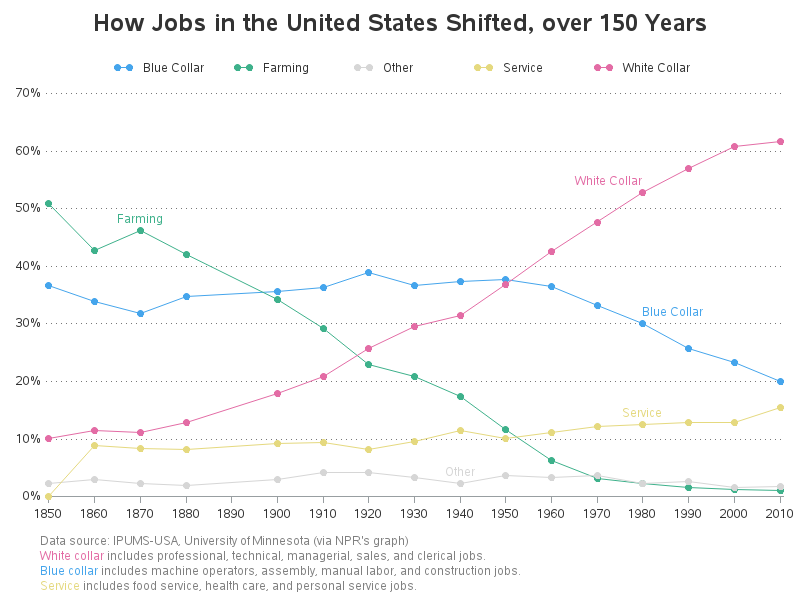Let me ask you a question: Did you experience any traffic jams today? If you have to commute to work, like most people do, chances are that you were stuck in traffic for some of the time. Guess what, you are not alone. The average commute time in the US is 80 minutes round trip per day. In the SF Bay area, it is even worse, where the average commute time is 2 hours a day. That’s a lot of time lost.
What’s more, all these cars cause a lot of CO2 emissions. Each car averages about 4.6 metric tons of CO2 emissions per year.
These are the two main problems with commuting to work: Lost time, and the negative impact on the environment. The American Dream also contributes to this problem. Jobs are usually in city centers, but people want to live in the suburbs, creating the need to travel long distances.
Solutions?
How can we solve these traffic problems? There are a few solutions that have been tried before:
Carpool lanes. These lanes seem like a good idea, as it would encourage people to share rides. However, I have observed that carpool lanes are pretty crowded these days and not that much faster compared to regular lanes. How about adding more lanes? If 3 lanes are not enough, how about 5, or 6? I think of a city such as Los Angeles, where you have double carpool lanes on highways that have 8 lanes each way, and traffic jams are still a problem. In China, there are even highways with 50 lanes, but some of the worst traffic jams in the world still happen there. How about improving public transportation? Improving public transportation will certainly reduce your carbon footprint, but it still takes time to commute to work. These solutions still don’t solve both of the 2 main problems: Lost time & impact on the environment.
Working from home
But there is a solution: Working from home!
Hi, my name is Kristian Widjaja and I rarely deal with traffic, because I work from home every day. Everyone working at my company, Jonajo, works from home. With today’s technology, anyone with a desk job should be able to do their work from home. I believe we are on the brink of a Home Office revolution.
Let’s take a look at this graph: In the 1950’s the percentage of blue collar vs white collar jobs were about the same at 37%, however over time, the number of white collar jobs has increased to above 60%, while blue collar jobs have gone down to 20%. That means that a large portion of all jobs are desk jobs, and could possibly be done from home. Jobs that lend themselves well to remote work include IT, administration, accounting, legal.

Benefits of Working from Home
There are some obvious benefits from working from home:
- You gain more time: Working from home, I can be more productive not wasting time in traffic, but also, I can spend more time with my family and attend school events.
- It reduces your carbon footprint, so it’s better for the environment.
- As an employer, I can hire people anywhere as long as they work in a similar timezone.
Drawbacks of Working from Home
There are also some drawbacks:
- There is less human interaction. But we can overcome that using modern technology.
- The lines between work and personal life may blur. You can overcome that by setting limits how much time you work and creating a dedicated home office space.
- For employers, it may seem harder to monitor performance, but I will argue that working from home will result in happier workers, and therefore increased productivity. Through a results-driven work environment, you can monitor your remote team’s productivity by the results they produce.
Unknown long term effects
There are some unknown longer term effects as well if a large portion of the population worked from home:
- How will this affect home prices and the global economy? Home values in expensive areas may drop. It may have an equalizing effect, which is not necessarily a bad thing.
- How will it affect society? I expect that it could revive local communities. Ever since I started working from home, I have been more involved with my local community, such as my local church, neighbors, and local coffee shops.
How to get started?
You might be asking, how do I join the home office revolution?
Here are some things you can do:
- Talk to your employer. Ask them whether you could start working from home, even 1 day a week, and show them how productive you are.
- Find a company that allows working from home. The number of companies that allow remote work is increasing. Zapier, and Invision, are examples. Also, at my own software development company, Jonajo, everyone can work from home 4 to 5 days in a week.
- If you are an employer, allow your workers to work from home. Try it out at a small scale, and see your workplace transform.
In summary, yes, working from home can save the world. It can save your time, and at the same time reduce your carbon footprint. Join me in the home office revolution!


